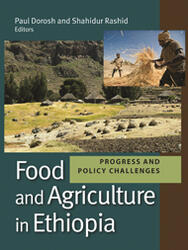Book Chapter
The Role of Agricultural Growth in Reducing Poverty and Hunger :
The Case of Tanzania
Book chapter in: Fan, S., and R. Pandya-Lorch (eds.), Reshaping Agriculture for Nutrition and Health.
In recent times, many countries, particularly in Sub-Saharan Africa and Southeast Asia, have been left puzzled by their failure to improve nutritional outcomes despite prolonged periods of rapid economic growth, in some cases accompanied by rising incomes among the poor. The Tanzanian economy is one example of a country that failed to reap the benefits of sustained rapid growth. National gross domestic product (GDP) grew at 6.6 percent per year during 1998–2007, while agricultural growth, often regarded as instrumental in lowering poverty rates in agrarian-based developing countries, averaged a respectable 4.4 percent during the period (MOFEA 2008).
Yet, between 2001 and 2007, Tanzania’s poverty rate only fell from 35.7 to 33.6 percent, while the share of the population consuming insufficient calories declined marginally from 25.0 to 23.6 percent (NBS 2010). This raises questions about the nature of the interrelationships among economic growth, poverty, and nutrition, and more specifically, how the structure of growth matters for poverty and nutrition.
 Join the network
Join the network